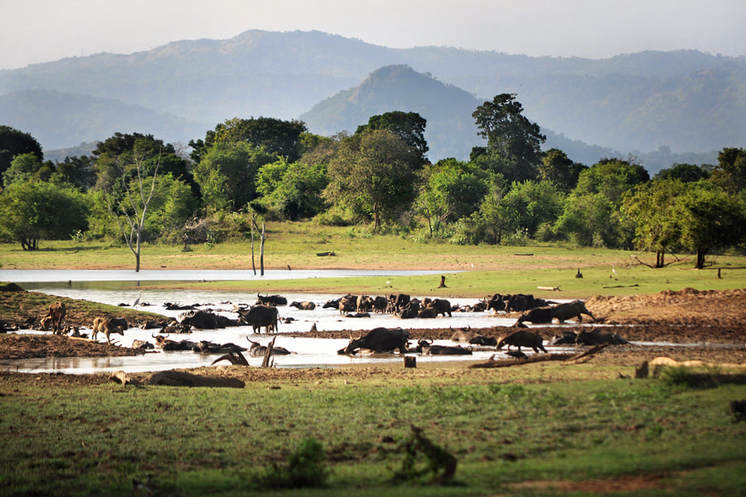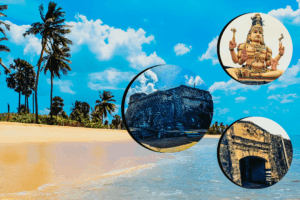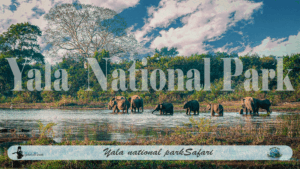Introduction of Udawalawe National Park
Udawalawe National Park is one of the most famous and greatest among all national parks in Sri Lanka. This is an important protected area that is home to a considerable flora and fauna and also it is an important habitat for Sri Lankan elephants and aquatic birds. The park is 165 kilometers [103mi] away from Colombo. The total area of the Udawalawe National Park is 30,821 hectares [119 sq mi] including the Udawalawe reservoir, which covers 3405 hectares at full capacity.
This national park mainly lies on the boundary of the Uva and Sabaragamuwa provinces. Boundary lines of this Udawalawe Nationa Park can be illustrated as follows: Its Southern boundary line is connected to the Udawalawe Thanamalwila road and also Sewanagala sugar plantation is located to the south of this Udawalawe Thanamalwila road. Lunugamwehera National Park is placed on the southeast boundary line of this National Park. While the western half on the left bank of the reservoir is expanded to the Ratnapura District the eastern sector on the right bank is expanded to the Monaragala District. At present, Udawalawe National Park has been remarked as one of the major and popular paradises of tourist destination and also the third most visited national park in Sri Lanka. The ecosystem of this Udawalawe National park has the ability to attract the minds of the entire world towards its affinity.
History
Udawalawe national park was declared the fifth national park in Sri Lanka on 30th June 1972 at a ceremony presided over by the ministry of shipping and tourism. [Government Gazette Notification No:14]. Udawalawe Nationa Park has been done at the end of the Udawalawe reservoir project. The major intention of this project is to name it a National Park and also to protect the catchment areas of this park by creating a refuge for the wild elephants. The second reservoir which was named Maw-Ara tank was constructed inside the national park between 1991 & 1998. This area was used by the people for their livelihood by doing some shifting/Chena cultivation activities. Those cultivation activities were done by the people before this area has been designated as the Udawalawe National park by the authorities. After being designated as a National Park, all the people left this place and created new habitats which were suitable for them.
Uniformly high temperatures and also seasonal rainfall can be seen in the dry zone location of the park because a large part of Udawalawe National Park lies in the dry zone. The climatic condition of this park varies with its location. However, its mean annual rainfall is about 1500 mm (59 in). Excessive rainfall can be seen in the months of October to January and March to May. While the mean annual temperature is about 27-28 °C (81-82 °F). Relative humidity ranges from 70% – 83%. It has an applicable climate condition for all the living organisms who exist in the park.
Flora of Udawalawe National Park
The beauty of the ecosystem mainly creates by the flora system. It almost helps to keep the greenish look inside the park. The major vegetation type of the park includes dry mixed evergreen forest, riverine forest, scrub, grassland, shrubs, teak plantation, etc. The teak plantation is an activity done by the farmers before this area has designated as the Udawalawe National Park. Dead trees standing in the reservoir create a visual image in people’s minds.






Nice share!